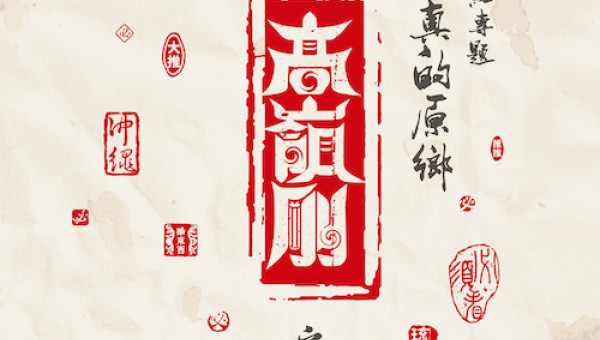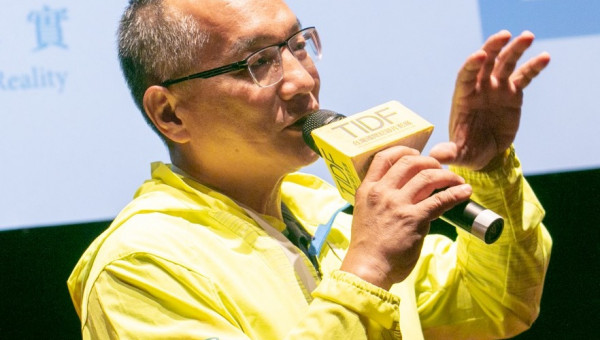MEMORIES LIBERATED: POSSIBILITIES AND DIVERSITY OF APPROPRIATION FILM
The last TIDF (its 13th edition in 2022) featured ‘Malleable Docu/Memory: Archival/Found Footage and More’, an archival footage-themed programme that explores approaches for representing reality and memory in documentary-making. Extended and expanded from the programme, this year’s TIDF features ‘Appropriate Appropriation: Archive and More’ dedicated to works based on archival footage in a broad sense. In the frame of TIDF, a documentary film festival pertaining to an institute with a collection of audiovisual materials, this dedicated programme is intended to advance possibilities and diversity in terms of archive access; possible approaches to documentary-making based on archival footage are explored through screenings and interdisciplinary projects by artists from various domains.
The aforementioned ‘archival footage in a broad sense’ covers all-embracing forms. This programme not only covers sorted and labelled materials with metadata, such as archives/archival footage from collecting institutions (e.g. cinematheques) or commercial organisations (e.g. television broadcasting companies) but further encompasses the following—found still/moving images which are unsystematised and of unknown origin; home videos/home movies/family albums easily available for ordinary people; surveillance footage, infrared footage and stock footage captured with cameras installed on streets, alleys or with various war machines; and even images of humans or non-humans generated through other previously known media.
To encompass possible uses of the aforementioned materials in filmmaking, this programme draws from ‘appropriation film’ proposed by scholar Jaimie R. Baron, which generally refers to audiovisual works made by reusing, and editing existing audiovisual materials, and expands on possible sources of materials for documentary filmmaking. As a filmmaking approach, ‘appropriation’ has existed since the early days of film history and consists of reinserting audiovisual sequences into (an)other narrative(s) for a variety of purposes. Appropriation of audiovisual materials has been technically facilitated thanks to the largely accelerated access to and production, and reproduction of images following the transition from analogue to digital. Consequently, a filmmaker can complete a work by collecting and editing, even without a camera.
Traditional ‘filmmaking’ implies capturing aspects of reality on a medium and achieving a representation of reality by manipulating the captured material through various approaches. However, in appropriation film, production centres on post-production: aspects of reality drawn from pre-existing audiovisual materials serve as a source for a new narrative. In other words, existing audiovisual materials are taken as a mine for exploitation; the collected ‘raw ore’ is processed through post-production and used in a new narrative prepared in advance. Through processing and exploitation, the ‘raw-ore’ escapes the initial built-in, traceable context to be in the service of uses and meanings in the new narrative.
Seen from the existing footage-based documentary-making in recent years, a majority of filmmakers have employed home movies thanks to their relatively easy access, with many instances of ingenious manipulation of source materials. For example, Between Delicate and Violent centred on the handmade paintings by the filmmaker’s grandfather combined with skilful embroideries by the grandmother; the characteristics of these media, as well as pieces (and sounds) of broken cups and dishes, are torn and then pasted, stitched unto home videos, creating a collage of polysemy brought by the ‘hand’, tracing scenes of family violence in one’s memory. In Background, the director Khaled Abdulwahed, a Syrian refugee residing in Germany, recounts being apart from his father who, unable to get refugee status, lives afar in Syria. Post-producing the only images he has of his father becomes a way to express how he misses his family. Along with intermittent video calls, traces of the father are incarnated by fusing his images as a young student in Germany with shots taken by the son in the same location at present, achieving a father-son togetherness on the same land. Family Trips by a brother-sister duo comprises family outing footage captured during their childhood, footage showing the father as a travel guide abroad, and clips captured by the father during the family’s contemporary revisits to Kaohsiung and their father’s hometown, Tainan. Intersected, these materials construct facets of the family in different periods, revealing the father’s careful arrangement for family gatherings.
Another major approach of appropriation film is preparing a sophisticated narrative for the unearthed raw-ore materials, which serve it in turn. The narrative sometimes travels through time and space, delineates the rolling wheel of time through a personal story, depicts the past beyond words, or evokes the political and economic context hidden behind images and an era. As in The Veiled City, a mysterious female voice from the future time travels back 250 years to London in the 1950s. Through a voiceover letter, it observes and relates the beginning of the end, as metaphors for global pollution and warming issues. Between Revolutions based on actual archived letters interwoven with archival footage/images features semi-fictional correspondences between two old college classmates respectively from Iran and Romania. The narrative recounts their parallel yet different experiences in life after going separate ways, showing the relentless grinding and crush of an era while revealing a deep bond beyond connection between dear friends. In 24 Cinematic Points of View of a Factory Gate in China featuring two fictional characters, a stock market observer and a filmmaker, surveillance footage captured off the gate of a factory in China is scrutinised from a ‘cinematic perspective’. The 6x4 split-screen format is employed to correspond with a common layout for footage of this type; factory worker scenes from existing films are inserted to contrast with surveillance footage from the factory. Along with voice-overs, this film dissects a century-long evolution of the factory-worker-capitalism relationship throughout history, in China and beyond. As for An Asian Ghost Story, it takes the angle of a ghost’s retrospective memory and expounds on the reasons for the wig becoming a Cold War commodity in the 1960s and the consequences of its inclusion in a trade embargo by the U.S. The little-known history is presented humorously by interweaving materials such as pseudoscientific interviews, KTV clips, and archival footage.
As aforementioned, production in ‘appropriation film’ has largely shifted towards post-production, which considerably relies on editing arrangements. For example, Private Footage begins with an anonymous sequence from the 1960s; by means of Internet information and algorithms, intricate arrangements, dissections of and investigations into implicit details in the source footage are demonstrated on the desktop, uncovering traces of colonised South Africa and hidden narratives from the apartheid period. In Broken View which also tackles the history of colonialism, the role of the magic lantern in cultivating colonised Africans and European colonists is examined through a solid discursive structure, by massively deconstructing colonial images and the apparatus of the magic lantern. Through enacting a variety of materials including glass slides, drawings, small-gauge footage, photographs, etc., the film re-presented the positions of the cameraperson and their subjects, thereby questioning their power relations. Moreover, for National Anarchist: Lino Brocka and Damnatio Memoriae, the viewer is literally bombarded with re-edited images of various sources–legally or illegally. While the former echoes the artistic style and brilliant career of the protagonist, a film professional, and traces his country’s history; the latter poses a sturdy critical power that is reflected through audiovisual clashes created with the same approach. Throughout The Film You Are about to See, disclaimers and audiovisual clips drawn from the title sequences of existing films are layered, highlighting the absurdity of these true, controlling disclaimers. These image and sound materials are heavily choreographed with in-frame or inter-frame intervention, piling and interweaving in order to reveal or defy another layer of truth behind the source images.
In terms of diversity in filmmaking, the director of Zinzindurrunkarratz plays on the limitations and attributes of media by recording his journey to finding a forgotten shepherd’s route with an old camera no longer capable of recording sound. Conceptually, archival sounds are ingeniously turned into a physical adhesive cleverly linking the silent images; a personal journey, family movies, memories about family and shepherds’ voices and attitudes/gestures, and imagination about landforms are all linked together.
Definitely, approaches to representation in film must correspond with the characteristics of the content; excessive techniques and showboating not in line with the narrative requirements only amount to mannerist pretence. In My Stolen Planet, private footage collected from different sources are arranged unostentatiously in combination with personal narratives and a national history in evolution. The narrative back and forth in time outlines the discipline and punishment regarding Iranian women’s bodily autonomy; the past splendid and vivid life in freedom in Iran is portrayed through the interlaced abundant footage left by countrymen who, amid historical changes in the country, fled abroad or sold their properties for survival.
Retrospectively, the planning of this programme did allow us to see the refreshing ingenuity of many filmmakers. However, one also constantly perceived, among filmmakers in Asia, a large room for improvement in terms of production output and technical proficiency regarding archival footage access and appropriation of existing audiovisual materials, despite the remarkable contexts and individual cinematic languages in the work of some Asian filmmakers. The reasons for this phenomenon certainly vary, involving institutions’ notions of archive preservation and use, the difficulty/facility of archival footage access, filmmakers’ imagination about media and ability for image deconstruction, etc., which are to be advanced or improved through gradual accumulation and development in various aspects. Therefore, from the angle of a festival organiser, the numerous unusual works presented in this programme and new ideas stimulated by the artistic projects hopefully expand the public and professionals’ imagination about pre-existing footage and further bring inspiration as to policy-making and thinking of collecting institutions.
Translated by Sylvie LIN


